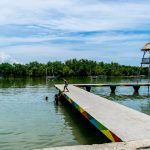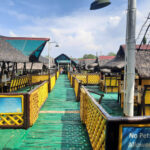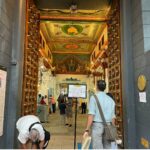Is swimming with whale sharks is on your bucket list? Consider visiting the quiet town of Oslob, the next time you’re in the Queen City of the South. Never mind the traffic and long way back to Cebu City—it’s worth the trouble, anyway.
According to a Cebu-based tour agency, whale shark watching in the town began in late 2011 when they began turning up in shallow waters. To keep them coming back, local fishermen began interacting with them by feeding them krill. Not long after, tourists have started to notice, resulting to a tourism boom.
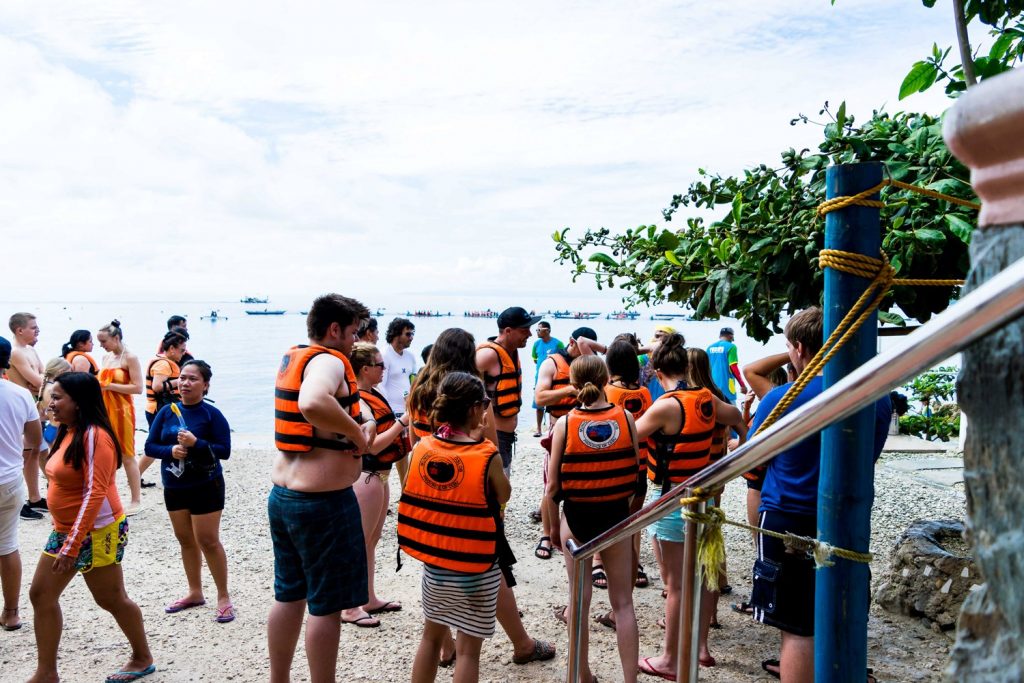
Tan-awan, a small fishing village in Oslob, is the site for the whale shark encounters. When planning your Oslob, Cebu itinerary consider the three-hour travel time, which means that if you leave Cebu City around 6:30 AM, expect to arrive at exactly three hours later. Oslob is 115 kilometers from the capital via the Natalio Bacalso highway.
Off-peak season seemed foreign in the town so expect a long queue for the whale shark experience. With the local tourism government involved, it was however quick and organized. The locals made sure you were taken care of.
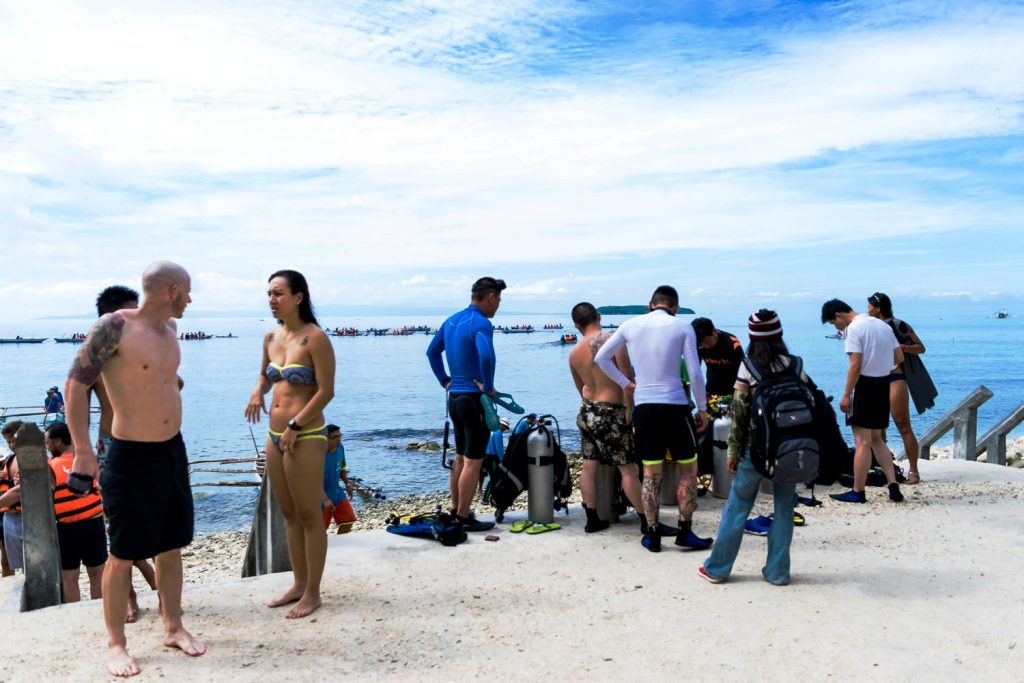
The beach is just a few steps off the highway by way of a dirt road. It is easy to recognize due to a throng of people milling about. Before you can go, you have to pay the registration fees at the tourism center, also in the area.
Tourists are required to undergo a seminar that will teach them the do’s and don’ts of swimming with the gentle giants. Rules include not putting on sunscreen, and swimming some good three meters away from the whale shark. No flash photography, either.
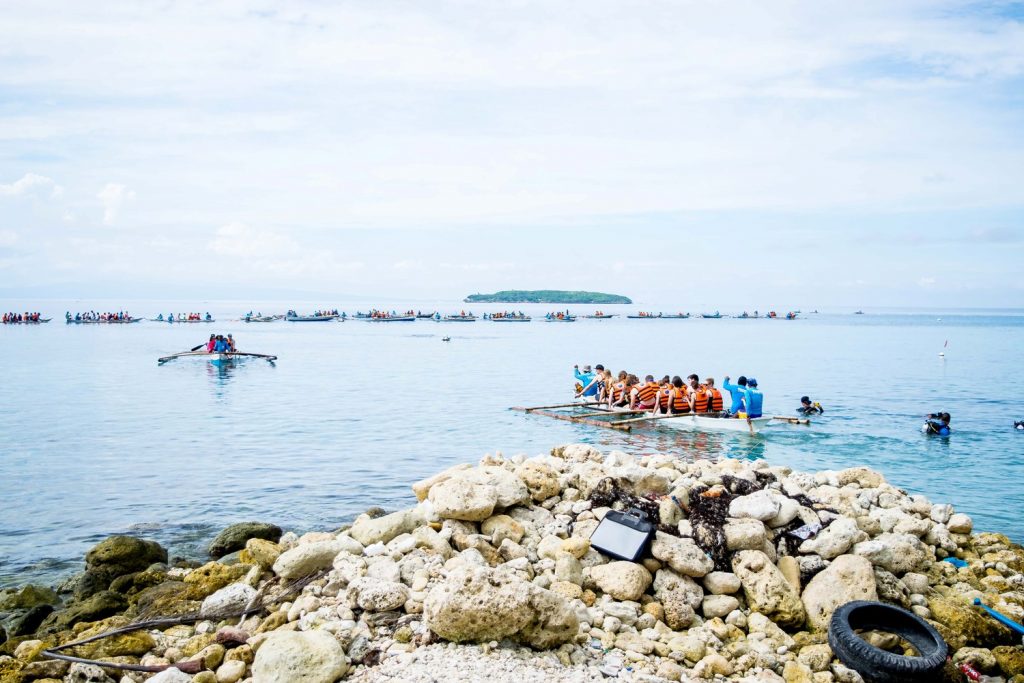
The bancas usually carry about four to six passengers at a time. It is possible for bancas to accommodate eight to ten people when the experience is in demand. Some bancas took even more passengers.
We were a few meters away from the shore when we had our first sighting. A smallish whale shark glided gracefully around our rowboat.
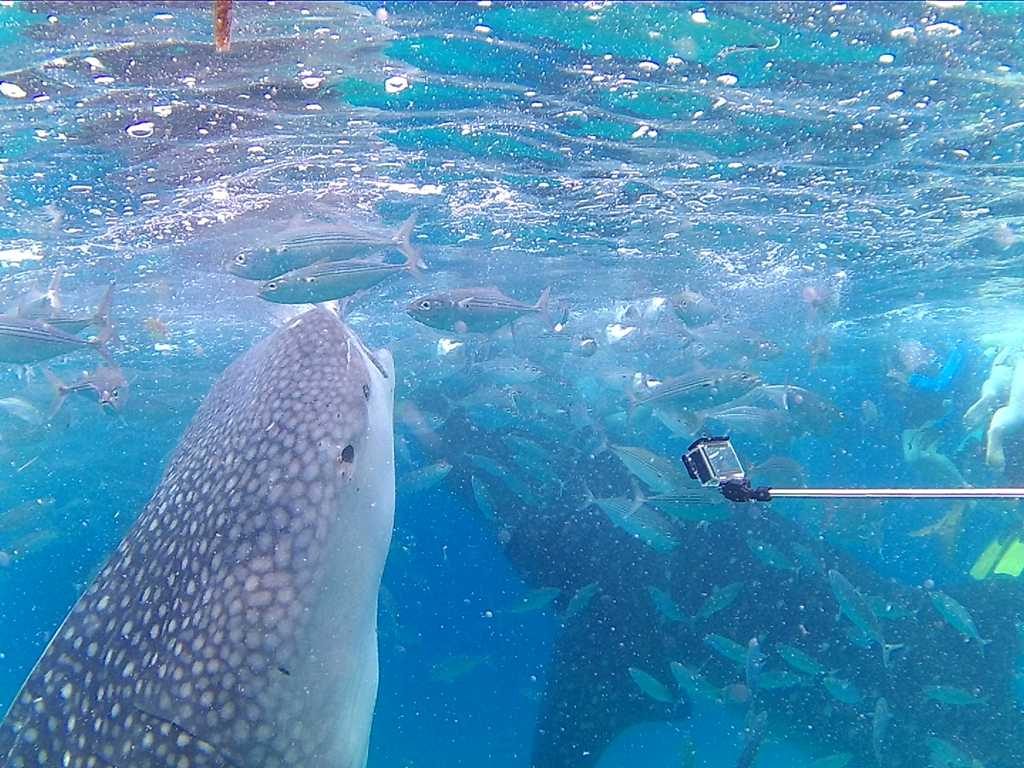
Some whale sharks have a school of fish circling them. The herd of fish were “scavengers” that fed off the shark’s dead skin. This behavior is known as “shoaling” or “schooling.”
These gentle giants were definitely not shy and have been used to people swimming about. One nearly brushed this writer’s leg with its tail. Another one went swimming in her direction at one point.

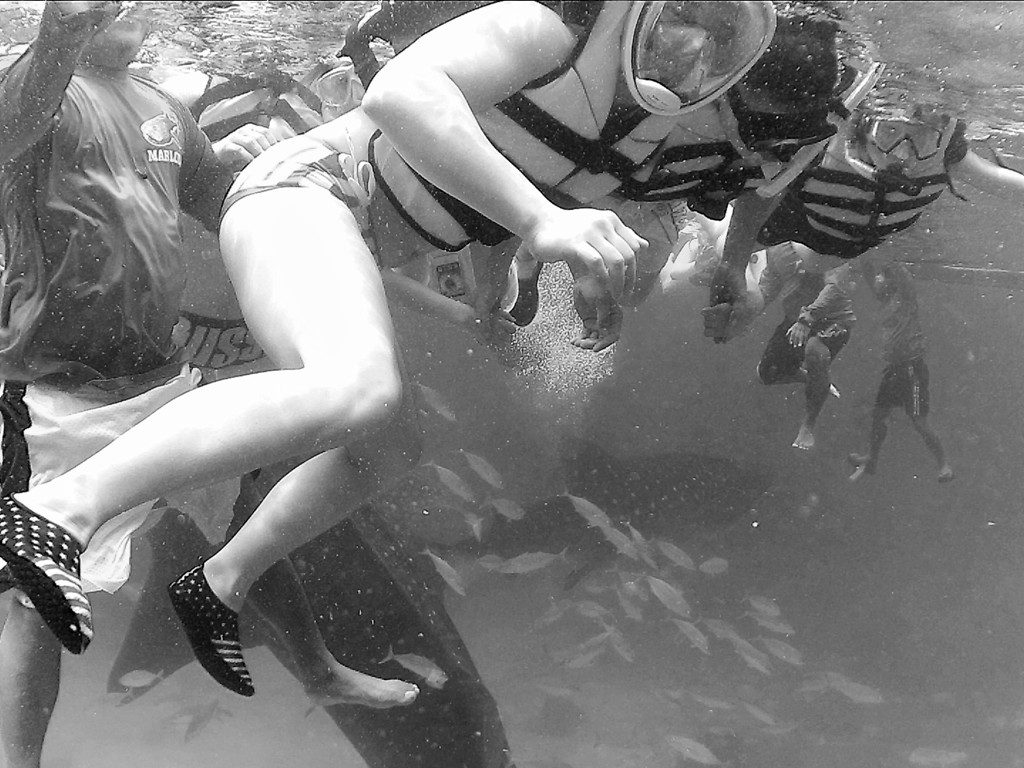
Do your best to maintain a safe distance from these creatures, no matter if they’re harmless and all. Accidents do happen, and remember some of them are as big as a bus.
The whole experience took only 30 minutes. It would be up to you if you would like to have another go at it, but 30 minutes should be good.
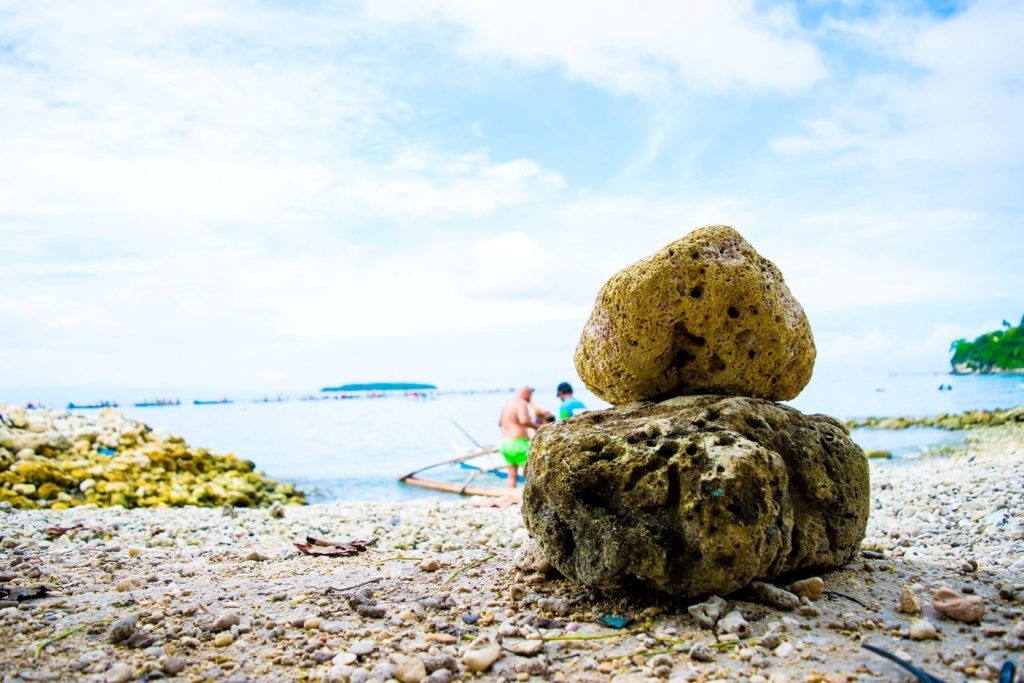
Oslob travel tips
If you’re looking for other things to do in Oslob, Cebu, consider going to Sumilon Island. Sumilon Island, a secluded minute island home to a popular resort chain, offers the perfect answer to Oslob’s pebbly shoreline, with its fine sand and aquamarine waters. It’s also just a quick boat ride away from Oslob.
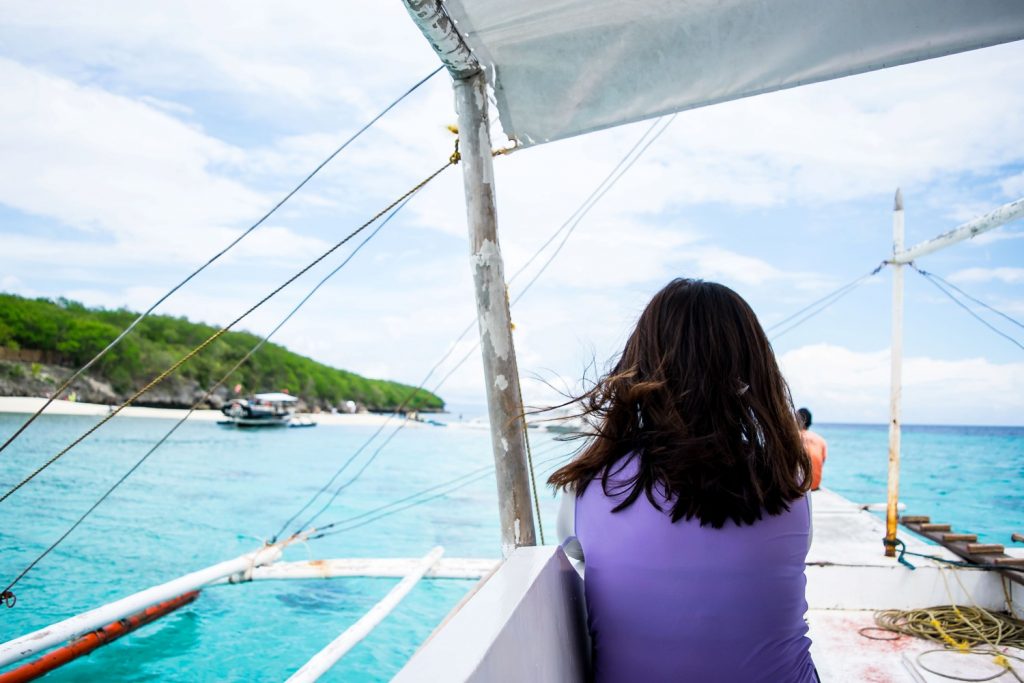
Oslob is directly across the sea from Panglao, Bohol, which means you can also visit Oslob from the said town. Rates vary, though some travellers have reported paying P700 (per person) for a one-way trip.
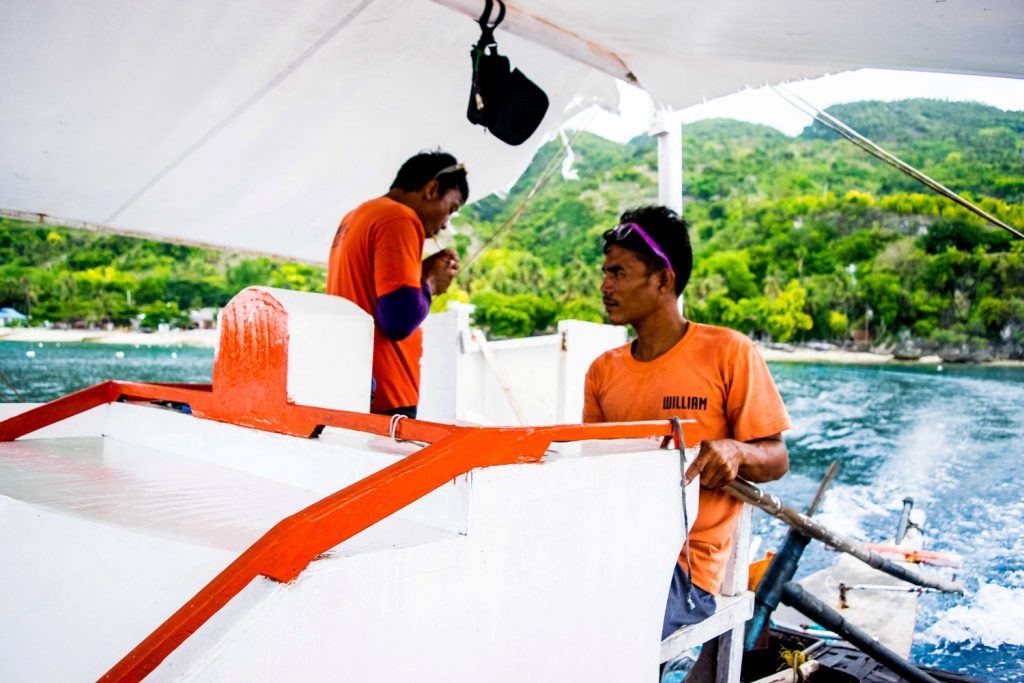
Hankering for a day trip to Oslob from Dumaguete City? It’s doable. From Dumaguete’s Sibulan port, ride a ferry or pump boat going to Liloan Port in Cebu (rates range from P45 to P62). The trip to Oslob from Liloan Port is around one hour or so. It’s up to you if you would opt for a tricycle, bus or jeepney ride from the port to Oslob.
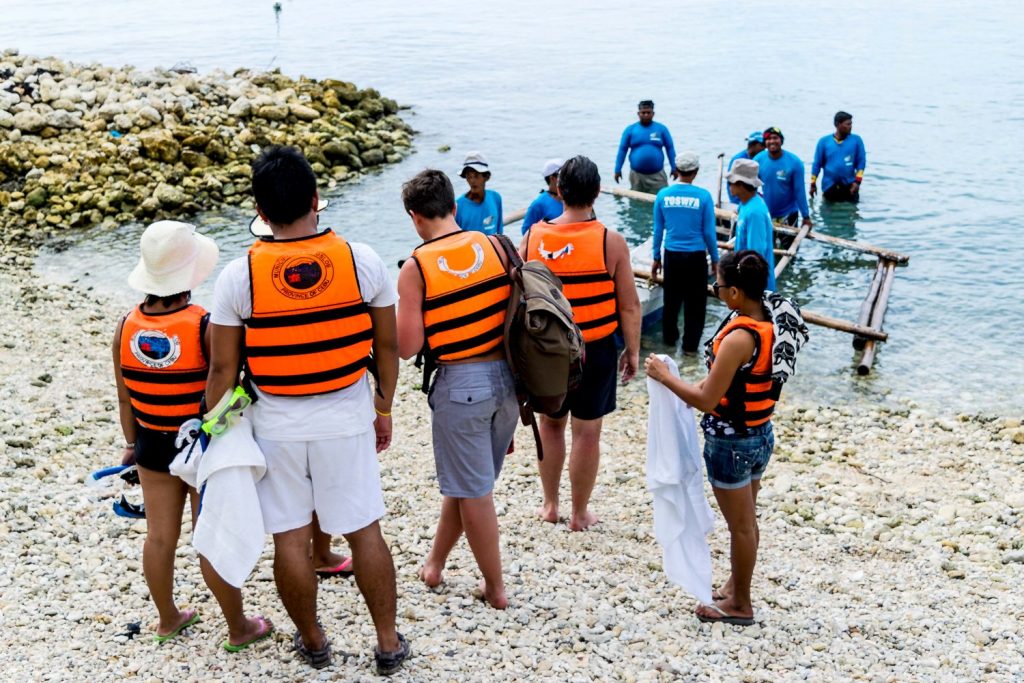
There is no shortage of resorts in Oslob, Cebu that cater to tourists who are in town for the whale shark watching or some scuba diving. Room rates range between P800.00 and over P3,000.
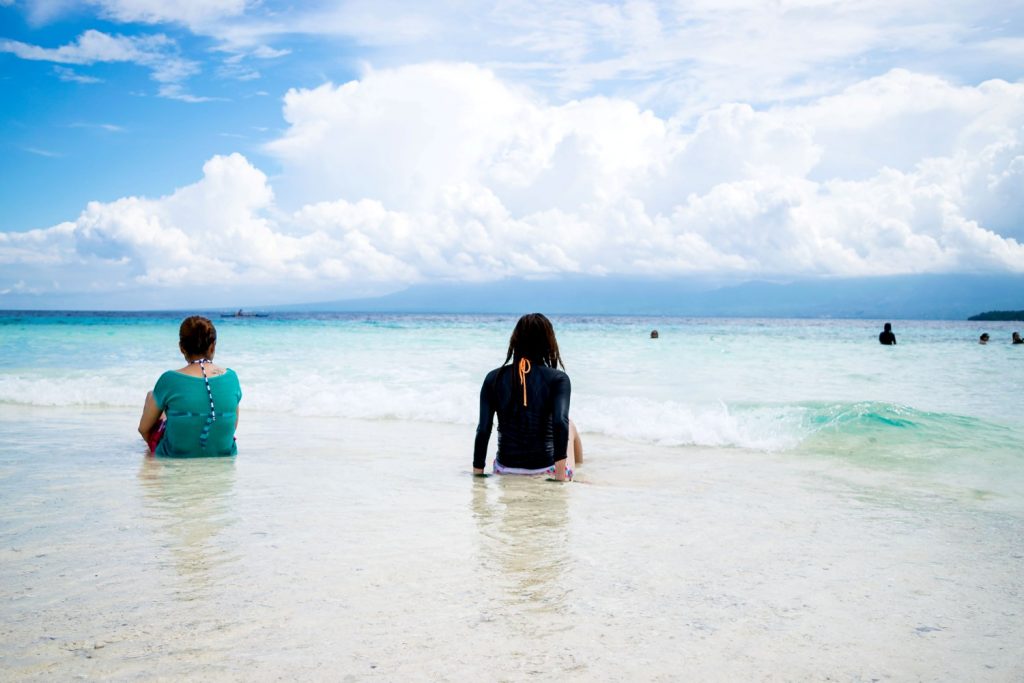
There are a number of ways to get to Oslob from Cebu City, but the easiest, and probably most common one, is via the South Bus Terminal. Ceres, a popular bus line, leaves the terminal hourly to travel to different towns in the South. The fare is around P130 to P150.
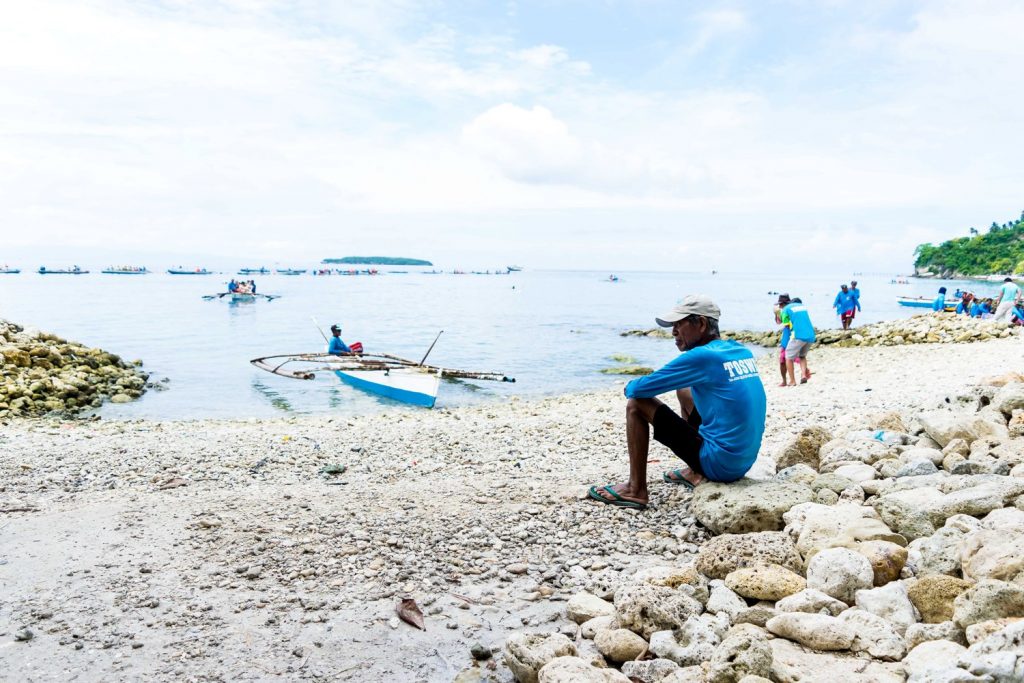
Buses can get a bit scarce in the late afternoon. Flag down a tricycle to bring you to the South Terminal to catch a bus, and enjoy the majestic mountain views.
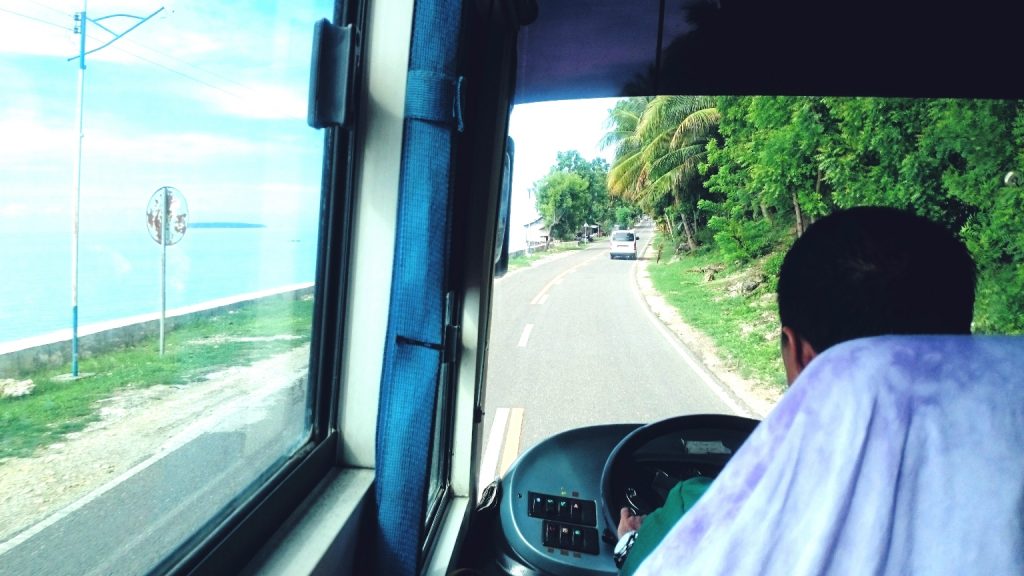
The municipal hall has an ATM machine where tourists can go to to replenish our funds. This is the only ATM nearby, aside from the one at the Oslob town proper.
There are eateries close to the municipal hall that serve really good pork dumplings and flavored, steamed buns. Try the native pastry called “bao-bao,” an empanada-shaped delicacy that contains a sweetened grated coconut filling.
Featured Image by Jake Descalso

